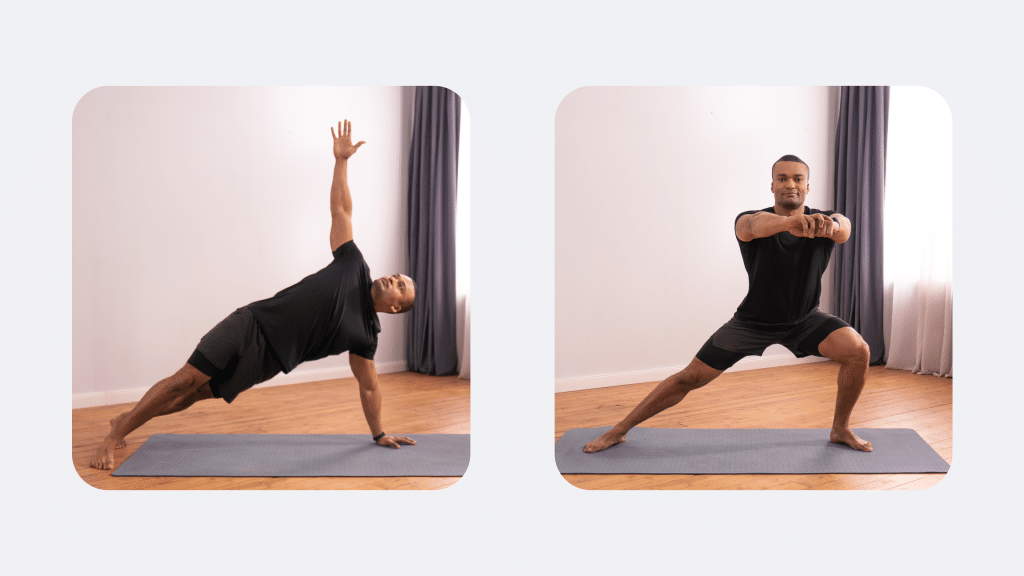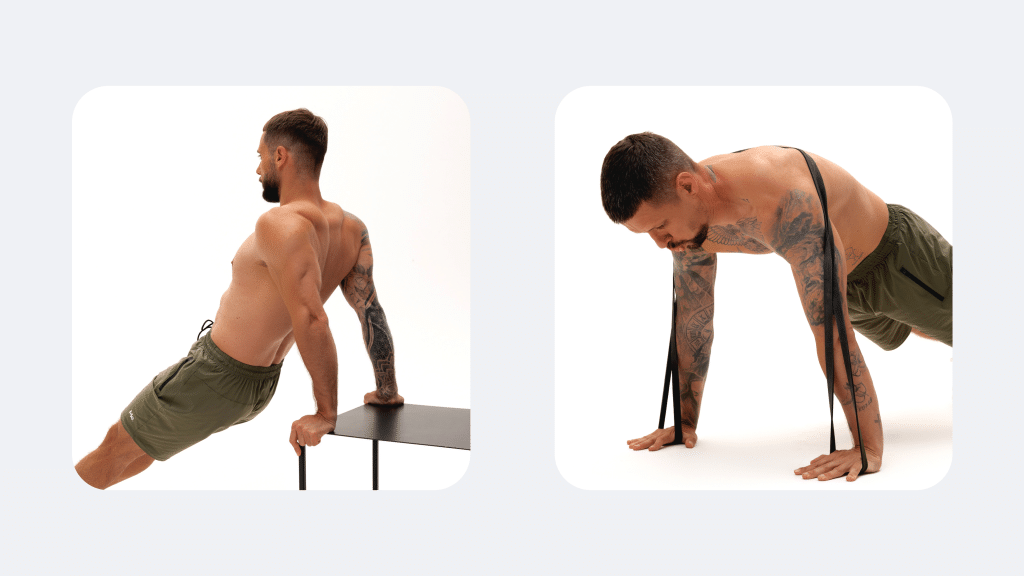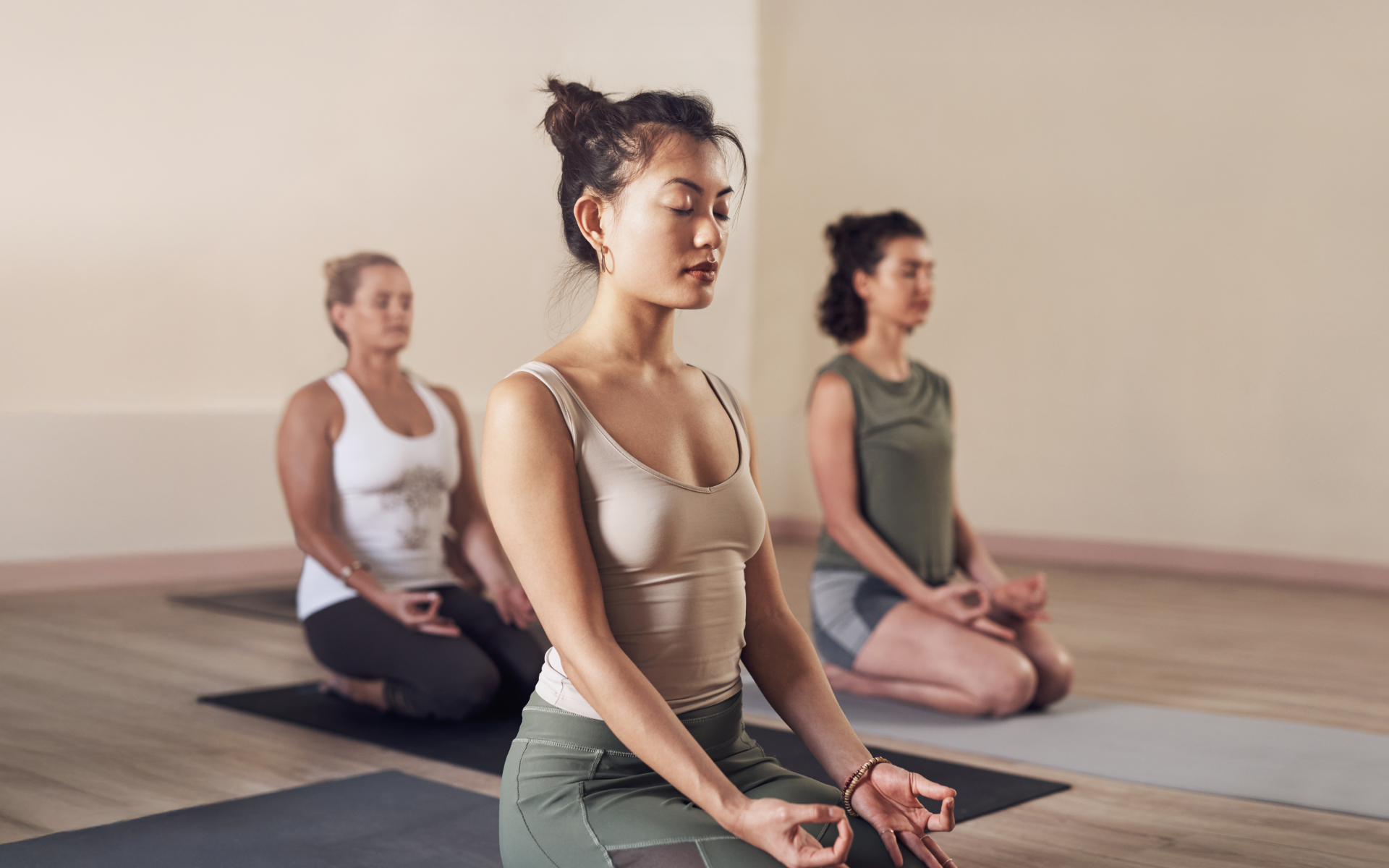When Thomas Hanna first developed somatic exercises in the 1970s, he believed chronic muscle tension caused by stress and habitual movements could be reversed through conscious movement and awareness (1).
Early studies supported this theory. Somatic exercises can retrain the brain and nervous system (5), although how it does so is still not completely understood.
They are suitable for anyone who is looking to improve their overall physical and mental well-being but can be particularly beneficial for men (2).
Research has shown differences in how men and women react to stress – both biologically and physically (3). As a consequence, men, like women, can benefit from slow, gentle movements that emphasize relaxation.
Unlike traditional stretching or strength training, somatic exercises don’t involve forcing the body into a position or using weights. Instead, they aim to release tension and improve mobility through conscious movement and awareness of the body (7).
Here are 10 somatic exercises that men can easily add to their daily routines to ease tension, improve flexibility, and enhance athletic performance.
Do Somatic Exercises Really Work?
Somatic exercises work. There is growing research on this topic and overall evidence points to their efficacy in improving muscle control and reducing chronic tension (4).
Improved Muscle Control
Firstly, somatic exercises focus on the mind-body connection, often targeting the nervous system directly. This approach is quite different from traditional exercise routines.
Instead of focusing solely on strengthening muscles or increasing cardiovascular fitness, somatic exercises aim to improve the way the brain communicates with the muscles.
The concept of neuromuscular re-education is central to somatic practices. By performing slow, mindful movements, individuals can retrain their nervous systems to release chronic muscle tension. Essentially, these exercises help “reset” the body’s habitual movement patterns, which can become maladaptive due to stress, injury, or repetitive motion (5).
Alleviate Chronic Pain
Scientific studies support the notion that somatic exercises can alleviate chronic pain. For example, research has shown techniques such as the Feldenkrais method and Alexander technique can lead to significant improvements in pain levels and functional mobility (4).
These methods emphasize awareness and control over your movements, promoting a more efficient and less painful way of moving.
We’ll take a closer look at these techniques in the following exercises.
Enhance Mental Well-Being
Exercise has been proven to have positive effects on mental health and somatic exercises are no exception. By focusing on the mind-body connection, these practices can help individuals become more aware of their bodily sensations and release and resolve any trapped emotions that are linked to experiencing a disruptive event (7).
This increased awareness can lead to a sense of calm and relaxation, which can be particularly beneficial for people who experience high levels of stress (7).
Whether you want to learn how to exit the spiral of self-harming behavior, overcome anxiety, cure insomnia or simply give yourself the time and space to bliss out and soak up the moment of complete peace and quiet – BetterMe: Meditation & Sleep app is exactly the tool for that ! If you don’t take care of number one, who will?
Do Somatic Exercises Help Men?
Somatic exercises can be beneficial for both men and women, but there are specific reasons why men may find them particularly helpful.
Release Tension Caused by Stress
Men may experience high levels of stress due to societal expectations and demands in the workplace. This stress can manifest as tension in the muscles, leading to discomfort and decreased mobility.
Somatic exercises focus on releasing tension and promoting relaxation, which makes them an excellent tool for managing stress (8) (6).
We’ve discussed how somatic exercises can be used to alleviate trauma effects in our 28-day somatic exercise for trauma relief article.
Improve Athletic Performance
Many men engage in physically demanding activities such as sports or manual labor. These activities can lead to overuse injuries and muscle imbalances if proper movement patterns are not maintained.
According to research, somatic exercises improve muscle control and coordination, reduce stress, and can improve healing in injured athletes. (2).
Increase Flexibility and Range of Motion
Somatic exercises can help improve flexibility and range of motion through gentle, controlled movements (1). This is particularly beneficial for men who may experience stiffness or tightness due to their occupations or exercise routines.
By releasing tension and increasing mobility, somatic exercises can enhance overall physical performance and reduce injury risk (1).
Find stretching workouts to help you become more flexible in our somatic stretching article.
What Are Examples of Somatic Workouts?
Somatic yoga, tai chi, and even mindful walking are all considered somatic exercises. Provided that these activities are done with a focus on awareness and control, they can help release tension and improve the mind-body connection.
That being said, here are 5 specific somatic exercises for men at home:
Pandiculation (9)
Sensory Motor Amnesia (SMA) is the phenomenon of muscle contraction that occurs when the chronic stress reaction disrupts the nervous system (6). If the stress continues, the muscles can remain contracted and limit intentional movements, which can also cause structural distortion in our bodies. Somatic exercises are designed to re-educate the nervous system and release these contracted muscles, thereby releasing any chronic muscle tension.
Developed from the principles of neuromuscular re-education, this exercise targets muscle groups that often become entangled in cycles of stress and improper movement patterns. By focusing on slow, conscious movements, individuals can heighten their awareness of muscular sensations, thereby retraining their brains to better control and relax these muscles.
This exercise specifically targets areas where muscle contraction is most common, such as the back, neck, and shoulders. These regions often hold a considerable amount of tension due to poor posture, prolonged sitting, or overwhelming stress.
For men who frequently engage in physically demanding jobs or sports, the pandiculation exercise can help alleviate persistent stiffness and discomfort, improving overall movement quality and mental well-being.
Steps to Perform the Pandiculation Exercise:
- Sit or stand comfortably.
- Take a deep breath in. As you exhale, slowly stretch your arms overhead.
- Extend your legs and gently arch your back. Hold for a moment, feeling the stretch.
- Slowly start to release the stretch. Lower your arms and bring your body back to a neutral position.
- Take a deep breath in and out.
- Gently tilt your head to one side, stretching your neck. Hold for a few seconds, then slowly return to the center.
- Repeat on the other side.
- Slowly roll your shoulders forward in a circular motion. After a few rolls, reverse the direction.
- Take a deep breath in, raising your arms overhead one last time. Exhale and slowly lower your arms.
Progressive Muscle Relaxation Technique
- Find a Quiet Space: Lie down on your back on a flat, comfortable surface with minimal distractions.
- Initial Awareness: Close your eyes and take a few deep breaths, bringing your focus to the areas of tension in your body.
- Slow Movements: Start by gently tensing and releasing small areas of your body, such as the shoulders or lower back.
- Mindful Exploration: Pay close attention to the sensations as you move, noting any areas of resistance or discomfort, without any judgment. Notice these sensations but don’t try to make any adjustments. Simply take a deep breath in and exhale slowly to release any tension.
- Consistency: Repeat these movements consistently, dedicating at least 10-15 minutes to the practice each day.
Read more: Somatic Healing Techniques: A Holistic Approach to Physical and Emotional Recovery
Arch and Flatten
This exercise is a classic somatic movement that is designed to enhance spinal flexibility and ease tensions in the back muscles. Inspired by the principles of the Feldenkrais method, this exercise encourages gentle, mindful movements that promote a healthy, functional spine.
The action of arching and flattening the back helps re-establish proper neuromuscular connections, making movements more efficient and less prone to injury.
For men who often experience back pain due to the physical demands of their activities, the Arch and Flatten exercise is particularly beneficial. It alleviates discomfort while also enhancing overall mobility and physical performance.
Steps to Perform the Arch and Flatten:
- Starting Position: Lie on your back with your knees bent and feet flat on the floor, approximately hip-width apart.
- Initial Breathing: Close your eyes and take several deep breaths, allowing your body to settle and relax.
- Arching the Back: On an inhale, gently arch your lower back away from the floor without forcing the movement.
- Flattening the Back: On an exhale, slowly press your lower back into the floor, noticing the entire range of motion.
- Continuous Flow: Continue this arch and flatten movement, synchronizing with your breath, for several minutes.
- Awareness: Pay close attention to the sensations in your spine and lower back as you move, making adjustments for comfort and ease.
- Integration: Practice this exercise daily to improve your spinal flexibility and reduce tension.
Mindful Walking
Mindful walking is a mindful exercise that is designed to cultivate balance, coordination, and a profound sense of body awareness.
Inspired by techniques such as tai chi and somatic movement therapy, this exercise emphasizes the internal experience of movement rather than external performance. It engages the entire musculoskeletal system while also promoting relaxation and mental clarity.
For men, particularly those who lead active or physically demanding lifestyles, mindful walking can serve as a valuable practice for enhancing proprioception.
By slowing down and bringing attention to each step, men can tune into their bodies, recognizing and correcting any asymmetries or habitual patterns that may lead to discomfort or inefficiency.
Steps to Perform Slow Motion Walking:
- Initial Position: Stand with your feet hip-width apart and your arms relaxed by your sides.
- Breath Awareness: Take several deep breaths, centering your focus on the movement of your body.
- Start Walking: Start walking at a very slow pace, consciously lifting one foot and placing it down with control.
- Mindful Movement: Pay close attention to how your foot, ankle, knee, and hip move as you take each step. Notice the bodily sensations with each motion, without any judgment.
- Balance and Posture: Maintain an upright posture and focus on the sensations in your feet and legs.
- Continuous Practice: Practice this form of walking for 5-10 minutes, gradually increasing the duration as you become more comfortable.
Voo Breathing
Voo breathing is a somatic breathwork practice that engages the diaphragm and promotes deep relaxation. Borrowed from the realm of polyvagal theory and somatic experiencing, this exercise involves vocalizing the sound “voo” during exhalation, which stimulates the vagus nerve and calms the parasympathetic nervous system (5).
It is a powerful tool for reducing stress and enhancing the connection between the mind and body. For men, integrating voo breathing into their daily routines can be particularly beneficial for managing stress and emotional tension.
Physically, it helps to open the diaphragm and improve respiratory efficiency, while mentally, it fosters a sense of calm and grounding. This exercise can be a cornerstone for anyone who is seeking to improve their mind-body connection and overall well-being.
Steps to Perform Voo Breathing:
- Starting Position: Sit comfortably with your back straight and shoulders relaxed.
- Initial Breaths: Take a few deep breaths in through your nose and out through your mouth.
- Begin “Voo” Sound: Inhale deeply, and on the exhale, vocalize the sound “voo”, allowing the vibration to resonate throughout your body.
- Focus on Vibration: Concentrate on the sensations in your chest and diaphragm as you produce the sound.
- Regular Practice: Repeat this cycle for 5-10 minutes, gradually deepening your breath and prolonging the “voo” sound.
- End with Stillness: Conclude with several moments of silence, feeling the residual calm and relaxation throughout your body.
With stress being a constant presence in our lives, taking time to process emotions, decompress and get into the right frame of mind is absolutely crucial. With BetterMe: Meditation & Sleep app your mental health is in good hands! Start using it now !
How Do I Start Somatic Exercise?
To start incorporating somatic exercise into your routine, it is best to start under the guidance of a trained professional. Somatic movement therapists and somatic experiencing (SE) practitioners can offer personalized instruction and support for your unique needs.
If you prefer to start on your own, there are many online resources available that provide instructional videos and written guides for somatic exercises. It’s essential to approach these practices with patience, curiosity, and a gentle attitude toward yourself. Remember to listen to your body and make any necessary modifications for comfort and safety.
FAQs
Can I do somatic therapy on myself?
Somatic therapy such as somatic experiencing (SE) therapy and eye movement desensitization and reprocessing (EMDR) should be performed with the guidance of a trained therapist. However, techniques such as mindful walking, grounding, and gentle somatic movement exercises can be done independently. Again, working with a trained therapist can provide more personalized guidance and deeper benefits.
We’ve discussed this further in our somatic therapy exercise blog.
How long does it take for somatic exercises to work?
The time it takes for somatic exercises to show results varies for every individual. Some people may experience benefits within a few weeks, while others may need several months of regular practice to notice significant changes.
Is tai chi a somatic exercise?
Yes, tai chi is considered to be a form of somatic exercise. It incorporates mindful movement, body awareness, and gentle postures, which are in alignment with the principles of somatic practices that aim to enhance physical and mental well-being.
The Bottom Line
Somatic exercises for men can be incredibly beneficial for improving physical, mental, and emotional well-being.
By incorporating practices such as mindful walking and voo breathing into your daily routine, you can cultivate a deeper mind-body connection, enhance movement capabilities, and reduce stress and tension.
Remember to approach these exercises with patience, curiosity, and self-compassion. If you have any specific concerns or injuries, you should consult a professional for personalized guidance.
DISCLAIMER:
This article is intended for general informational purposes only and does not serve to address individual circumstances. It is not a substitute for professional advice or help and should not be relied on for making any kind of decision-making. Any action taken as a direct or indirect result of the information in this article is entirely at your own risk and is your sole responsibility.
BetterMe, its content staff, and its medical advisors accept no responsibility for inaccuracies, errors, misstatements, inconsistencies, or omissions and specifically disclaim any liability, loss or risk, personal, professional or otherwise, which may be incurred as a consequence, directly or indirectly, of the use and/or application of any content.
You should always seek the advice of your physician or other qualified health provider with any questions you may have regarding a medical condition or your specific situation. Never disregard professional medical advice or delay seeking it because of BetterMe content. If you suspect or think you may have a medical emergency, call your doctor.
SOURCES:
- Exploring the Impact of the Somatic Method ‘Timani’ on Performance Quality, Performance-Related Pain and Injury, and Self-Efficacy in Music Students in Norway: An Intervention Study (2022,nih.gov)
- Examining the Effectiveness of Psychological Strategies on Physiologic Markers: Evidence-Based Suggestions for Holistic Care of the Athlete (2014,nih.gov)
- Kegel exercises – self-care (2023,medlineplus.gov)
- Moving With Pain: What Principles From Somatic Practices Can Offer to People Living With Chronic Pain (2020,nih.gov)
- Neuroplasticity Intervention, Amygdala and Insula Retraining (AIR), Significantly Improves Overall Health and Functioning Across Various Chronic Conditions (2024,nih.gov)
- Somatic experiencing – effectiveness and key factors of a body-oriented trauma therapy: a scoping literature review (2021,nih.gov)
- Somatic Self Care (2024,hopkinsmedicine.org)
- What is somatic therapy? (2024,mayoclinic.org)
- What is Pandiculation? (n.d., somaticmovementcenter.com)












